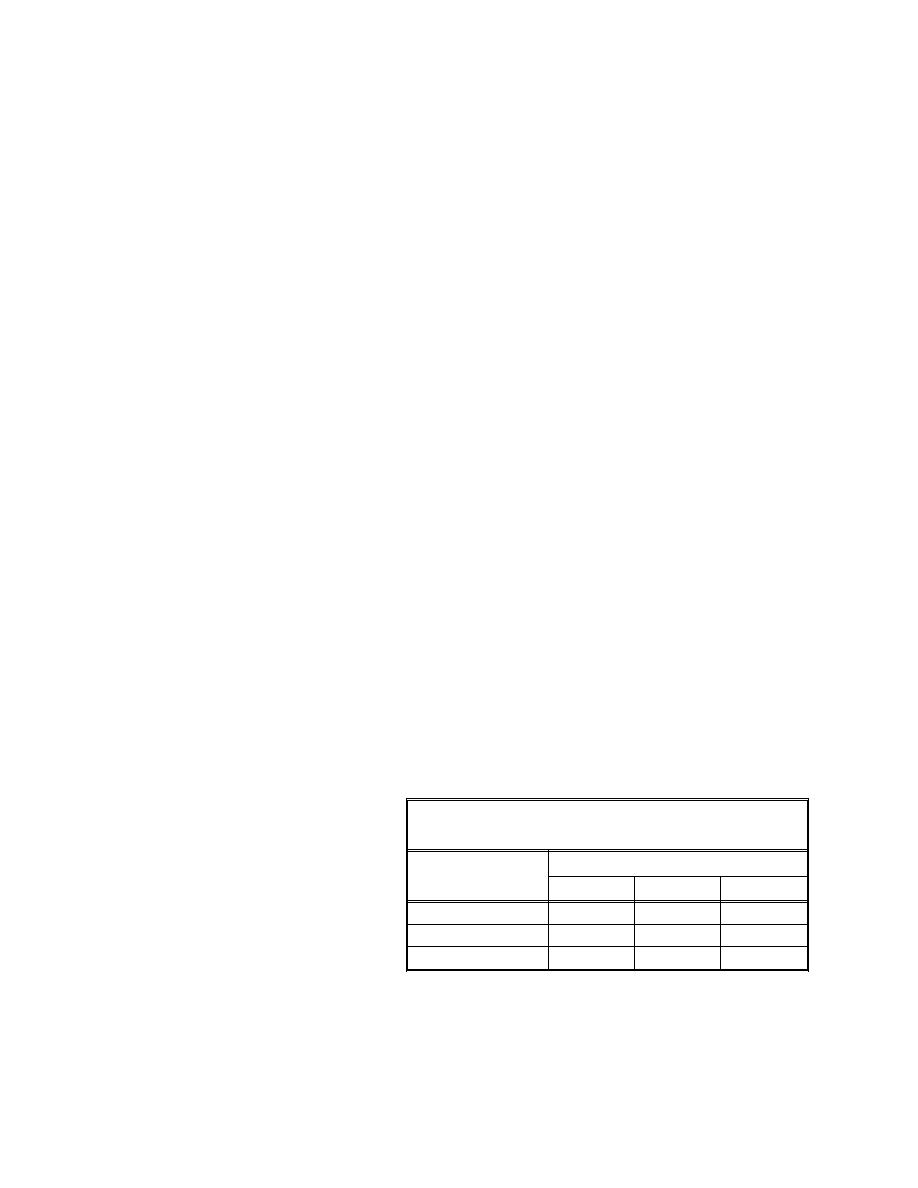 |
||
|
|
||
|
Page Title:
Example Hopper Dredge Specifications |
||
| |||||||||||||||
|
|
 ERDC TN-DOER-I5
August 2000
that the dredged material consists of a homogeneous fine sediment mixture, therefore, the uncer-
tainty of a properly calibrated nuclear density gauge as stated by the manufacturer is 0.001 g/cm3
ej
Uρs . The magnetic flow meter has a full scale value of 9.76 m/sec and an uncertainty of
0.25percent of full scale or 0.024 m/sec (UV).
Example Hopper Dredge Specifications. The hopper dredge is equipped with differential
pressure transducers for measuring the vessel draft, and ultrasonic water level sensors above the
hopper for measuring the slurry level in the hopper. The vessel draft measured by the pressure
transducers is used to determine the weight of material in the hopper by comparing the measurement
to a draft versus vessel weight diagram (Carene diagram). The hopper volume is calculated by
comparing the ultrasonic water level measurements of the hopper slurry level to data relating the
hopper depth to hopper volume. For this example hopper dredge, the hopper has an average volume
of 6,122 m3 (VOLh), with an average water load of 272,160 kg (Wh). The uncertainty of the sensors
for measuring hopper depth (volume) and load were calibrated using water in the hopper. Statistical
data on the water level transducers for measuring the volume as a function of depth in the hopper
e
j
indicate a measurement uncertainty of 61.22 m3 UVOLh , and the differential pressure transducers
ej
used for measuring the draft of the vessel have a measurement uncertainty of 2,722 kg UWh .
Low Uncertainty Assumptions. Properly calibrated instruments will have accuracies as
previously stated in the dredge specifications. The measured density of the sediment (mineral) and
water will be assumed to have uncertainties of 0.03 g/cm3 and 0.01 g/cm3 respectively
e
j
ej
Uρm and Uρw . The in situ density will be assumed to have an uncertainty of 0.036 g/cm3 Uρi .
High Uncertainty Assumptions. For poorly calibrated instruments and unmeasured sediment
and water properties, the following uncertainties are applicable. An uncertainty of 5 percent of full
ej
scale will be assumed for poorly calibrated hopper monitoring instruments, or 13,608 kg UWh
e
j
ej
and 306 m3 UVOLh . An uncertainty of 0.01 g/cm3 Uρs is assumed for a poorly calibrated
ej
0.03 g/cm3 Uρw for estimated water
ej
Table 1
density, 0.053 g/cm3 Uρm for inac- Pipeline Dredge Variables and Uncertainties
curate sediment mineral density, and
Variables
ej
0.18 g/cm3 Uρi for estimated sedi-
ρs (g/cm3)
D (m)
V (m)
Values
ment in situ density. The variables and
Nominal
0.61
4.57
1.20
their uncertainties for both the pipeline
High Uncertainty (U)
0.00025
0.097
0.01
and hopper dredge examples are listed
Low Uncertainty (U)
0.00025
0.0024
0.001
in Tables 1, 2, and 3.
UNCERTAINTY ANALYSIS EXAMPLE CASES - RESULTS AND DISCUSSION: To
illustrate the error range possible when calculating production with the previously described
systems, a series of uncertainty calculations were performed for four example cases. For these
9
|
|
Privacy Statement - Press Release - Copyright Information. - Contact Us - Support Integrated Publishing |